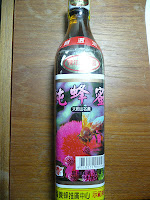Luciano Pavarotti passed away in 2007. He is considered one of the most prominent tenor in the second half of the 20th century. His distinct brassy voice used to lighten the music world especially during the Christmas holiday season. One of his most famous Christmas concert was performed in 1978 at Montreal Notre-Dame Basilica. I watched it at that time and recorded it in a VHS tape for my personal collection. Every once in a while during Christmas time, I'd play it through my stereo system with good bass & shared it with my family. It sounds grand & moving every time we listen to it. In this performance, I particularly like to point out three songs which are truly classic and transcend religious mood and setting. It reaches our heart with pure ethereal notes, melodies and Pavarotti's voice. You can view this performance at the link:
6:20-9:00, O Holy Night (Cantique de Noel), composed by Adolphe Adam in 1847. The lyrics reflects on the birth of Jesus and of humanity's redemption. At the end of the carol, Pavarotti delivered the feeling with such a powerful voice that moved every soul in the cathedral.
Peuple à genoux, attends ta délivrance.
Noël, Noël, voici le Rédempteur,
Noël, Noël, voici le Rédempteur !
Translation:
People kneel down, wait for your deliverance.
Christmas, Christmas, here is the Redeemer,
Christmas, Christmas, here is the Redeemer!
20:50-25:27, Ave Maria, composed by Franz Schubert in 1825
The piece was composed as a setting of a song from Walter Scott's popular epic poem, 'The Lady of the Lake'. The opening words and refrain of the song, namely "Ave Maria" (Latin for "Hail Mary"), may have led to the idea of adapting Schubert's melody as a setting for the full text of the traditional Roman Catholic prayer Ave Maria. Regardless of the origin, it has become one of Schubert's most popular works recorded by a wide variety and large number of singers, under the title of Ave Maria in arrangements with various lyrics which commonly differ from the original context of the poem. The song sounds like a hymn, so holy, somber and humble. It is best to feel the music in a grand cathedral like Montreal Notre-Dame.
25:30-28:40, Mille Cherubini in Coro, adapted and arrangement for voice and orchestra by Alois Melichar. Composed by Franz Schubert originally.
The adapted song consists of two tunes, one from Schubert's Rosamunde Incidental Music and one from Wiegenlied (Lullaby). Mille Cherubini in Coro is 'A Chorus of a Thousand Cherubs' in English. It is perhaps not the intention of Schubert. However, it doesn't matter as this song becomes a Christmas classic since 1935 and transcends the popularity of the original lullaby. The lullaby itself is brilliant and often mentioned with the lullaby of Brahms and Mozart. Here I attach an Excel file which lists the original lyrics of Schubert and the adapted song by Melichar. There are three stanzas in the original work by Schubert. Here I only list the first and the last stanza as Pavarotti sang only the two stanzas in 'Mille Cherubini in Coro'.
25:30-25:50 The tune from Wiegenlied
25:53:26:57 The tune from Rosamunde
26:58-28:40 The first and third stanza of Wiegenlied
Luciano sang the last 4 lines of the stanza 3. The first 4 lines were played by the orchestra only.
I created an Excel file which lists the lyrics of 'Mille Cherubini in Coro' in Italian and Wiegenlied in German. I also include the English translation of both lyrics for reference. You can find it in the link:


































